By Jeffrey A. Rendall; Images Courtesy of TaylorMade
|
|
CARLSBAD, CA – There’s an age-old mystery that’s beset golf club makers since the beginning of recorded golf time – how to make a golf club that fits every swing?
Teaching professionals tell us that we all have a tendency. Some folks ‘naturally’ fade; some draw; some slice, some hook… and others defy the laws of golf and hit it all over the place – ‘naturally’ horrible. Still others want to shape the ball a certain way, and are searching for a club that might help in the effort.
The engineers at TaylorMade sought to solve this ancient dilemma in late 1999. On the doorstep of a new century, the company’s biggest brains were still fighting to design a club that could be altered to produce different results.
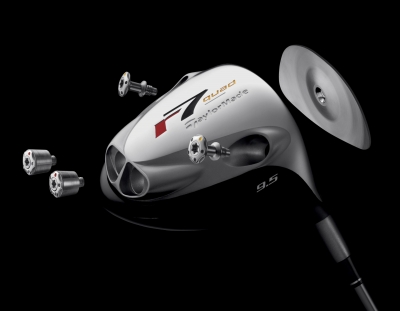 |
Tom Olsavsky, TaylorMade’s Director of Product Marketing, Metal Woods, takes it from here: “The concept for the r7 Quad driver we offer in 2005 really started back when we were trying to design the 300 series (which came out in late 2000) – basically, that we needed more than one type of club to fit different kinds of golfers.”
For those with short club-memories, TaylorMade produced the 300 Series, which introduced three sizes of heads -- 300, 320 and 360cc’s – kind of the skirmishers leading the titanium, big driver headed army that’s revolutionized golf. Even these clubs look diminutive compared to the biggest heads these days – a whopping 460cc’s – but in their time, they were plenty ‘big’ in their own way.
Olsavsky and his co-designers also realized that even at the bigger head size, people still needed differentiation and specialization. “The 300 Series was developed to provide different performance for different swings. But during that process, someone came up with the idea of making a single club that can be changed to fit a player’s tendencies or desires.”
Hence, the conceptual birth of the r7 Quad Driver. But even in the days of advanced computer aided design and manufacture, the idea of a changeable club preceded its practical feasibility – at least by a few years. Olsavsky said they just couldn’t make the r7 at that time, leaving it to the long-term planning group to try and discover a way to implement it.
The internal group did their homework and kept at it, eventually breaking through. But then it was time to test it.
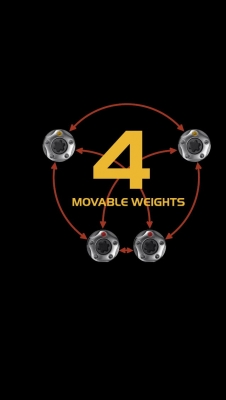 |
“It takes some time to test those kinds of systems, and figure out how to make them all work, particularly the movable weight system,” Olsavsky explained. “We needed a movable weight system that was very robust and heavy enough so that we could move enough weight around to make a difference.”
For those unfamiliar, the TaylorMade r7 driver offers a 400cc head with four weights (two ten-gram plugs and two two-gram plugs) on the bottom of the club that you can actually unscrew yourself, and move to wherever your flight-path desires. The necessary hardware comes with the club, and once you’ve taken a few moments to examine the proper sequences, most anyone can do it.
Olsavsky says when they tested it, 99% of golfers got it.
“We were very concerned, when designing the r7, that it would be too complicated for someone to figure out, and it wouldn’t sell. We ended up doing a lot of focus groups and found the biggest issue we encountered as far as the movable weight system was concerned was trying to understand it – which led us into implementing a really strong program of communication about the product and the system itself,” Olsavsky said.
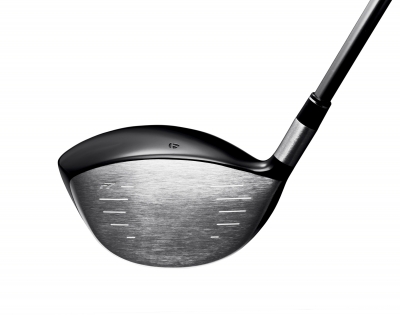 |
All of which led to the peripherals that go with the club -- a ‘trajectory wheel’ and a manual, explaining in simple terms what goes where, in terms of the weight plugs. If you want to encourage a fade, then configuration x will give it to you. Likewise, a different pattern will produce a different ball flight.
I’ll admit, it’s easy enough for me, and I flunked the handyman course many moons ago.
“We found that almost everyone got it,” Olsavsky said. “99% rated it ‘easy to understand,’ which was very encouraging. We also spent a lot of time with the media and out in the field with many of our large retailers, going through training sessions with them, helping them learn what’s going on with the system and how to work it.”
The result of those thorough training sessions is the r7 became one of the most commercially successful drivers on the market – which is pretty impressive when you’re asking $600 for it. Righteous bucks, to be sure.
As mentioned above, the r7 measures a rather ‘smallish’ 400 cc’s. Olsavsky said it’s patterned after one of their most successful clubs on Tour, the r510TP, so it wasn’t necessary to try and make it bigger – as is certainly the trend these days. If you want the big mama, try the r5 version, which bulks out to a hefty 450cc’s, but doesn’t include the movable weight system.
 |
Personal preference was for the smaller r7 version with the weights, and true to Olsavsky’s words, the club is very easy to use. The 400cc head was purposely made smaller to allow for more weight to be moved around. Simply put, the bigger the head, the less discretionary weight – the less choice. If you’re going to have a club concept like this, you might as well permit people to use it.
Needless to say, the r7’s very well proven on the PGA Tour. The world’s number two/one player used it to help him along to Player-of-the-Year honors in 2004, and it’s consistently number one in the bag counts in Tour events. If it works for the big guys, it works for us, right?
At GolfTheMidAtlantic.com, we’ve gotten away from recommending one club over another. We don’t scientifically test golf clubs, but we’ll add some personal preferences and impressions. With that said, we can say we like the TaylorMade r7 as much as any golf club we’ve ever tried. The performance is there, but you do have to put in the effort to figure out what exactly it is that you want from it.
If you want a club straight off the rack, we wouldn’t recommend the r7. If you’ll spend a few minutes figuring out the preferred ball flight you desire from your tee shots, we’d suggest at least trying it. As always, talk to your local PGA professional about fitting – that’s been extremely helpful. And, as you’ll see below, the fitting system at TaylorMade will help to make up your mind for you.
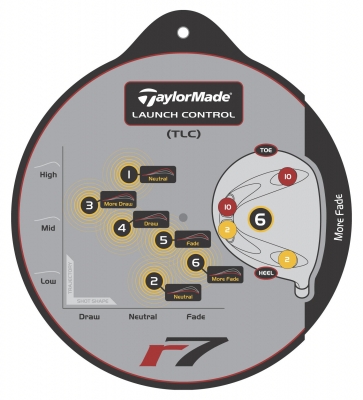 |
Rescue from the Fairway
Along with the r7, we thought we’d try some of TaylorMade’s new game-improvement clubs on the market, specifically, the Rescue Fairway Woods. It’s been several years since we tried a new set of fairway woods, and had heard quite a few favorable impressions on the TaylorMade group.
Tom Olsavsky again provides the expertise: “The Rescue Fairway woods are designed for a golfer who’s just looking to get the ball up in the air and hit it a good distance down the fairway. These aren’t players who’re looking to get it on the green, or looking to hit it a certain yardage – it’s our foremost game improvement product in the line of metal woods.”
The Rescue Fairway line’s lofts are a bit higher (about two degrees), aiding in the effort to get the ball airborne. Because their primary mission is to get the ball in the air, you may not see as much distance using the Rescue Fairway Woods as from a regular fairway wood – a fact that better players who aren’t experiencing difficulty with fairway woods should consider.
Olsavsky said their model for the Rescue Fairway Line was Benoit Vincent, TaylorMade’s Vice President of Research & Development, and obviously, a golfer who’s looking for a little help on distance shots from the short grass: “Benoit is a player who, when he gets in the fairway, doesn’t have a good option. He usually goes with a rescue club, but sacrifices some distance on that shot because he’s not comfortable hitting a fairway wood.”
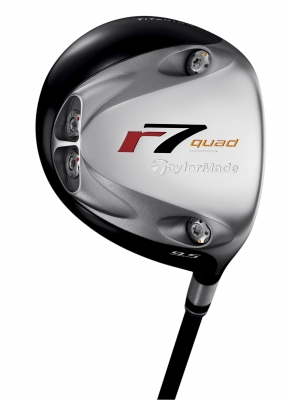 |
So this club is not necessarily about distance control, it’s about success for players who normally wouldn’t hit a fairway wood off the ground.
The Rescue Fairway Woods aren’t really members of the ‘hybrid’ craze, in that they’re not designed specifically to replace irons. The Rescue Fairway clubs are easy-to-hit clubs for players who haven’t enjoyed much success with fairway woods. They’ve got fairway wood shafts, unlike hybrids, which are designed with iron shaft technology (iron shafts are larger in diameter).
True to its purpose, getting the ball in the air with the Rescue Fairway Woods was very easy. The shape of the head breeds confidence, and it’s appropriate for any situation from fairway lies or the short-cut of rough. Probably less preferred was using them off the tee – I’ve had better success with standard three woods with tee shots.
So if you’re looking for a club that’ll help you ‘catch air’ from the fairway, this might be a good bet for you.
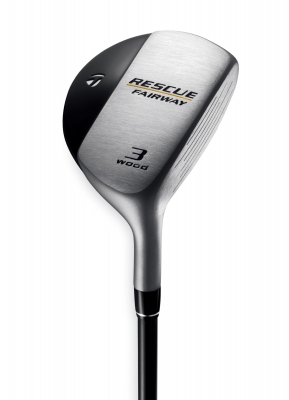 |
Fitting in the 21st Century
As if hitting the TaylorMade products wasn’t enough, last summer I had the chance to get wired to TaylorMade’s revolutionary MATT system at The Kingdom, which resides adjacent to the company’s headquarters in Carlsbad, California.
MATT, which stands for Motion Analysis Technology by TaylorMade, is significantly different than any type of fitting session that I’ve ever had – which have ranged from your standard once-over by a golf pro to hitting balls into a net while being sized-up by a launch monitor.
The MATT system was a bit intimidating at first, as you’re required to wear ‘sensors’ which are attached to articles of clothing – a hat, a vest, a belt for the waist, knee pads, wrist pads, elbow pads and of course, shoes. Then they lower a screen and you’re asked to hit balls into it, all the while being spied upon by several cameras throughout the room.
Luckily, much of the intimidation is reduced by the know-how of the Kingdom’s staff, led by Will Miele, the Manager. Miele’s handled all levels of players from beginners to professionals, and says the MATT system can help almost anyone – first by accurately ‘fitting’ a person for clubs, then by suggesting ways to correct flaws in your swing.
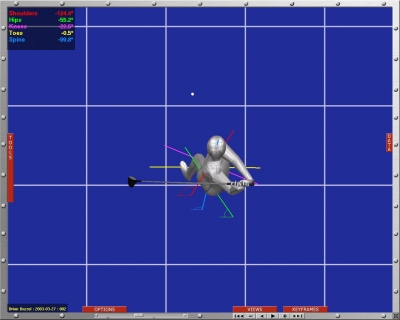 |
“The MATT system is unique because it provides immediate feedback,” Miele said. “And you can’t really hide from your swing, because the stats are right there on screen, in realtime. We can pinpoint exactly what’s going on with the ball flight for each shot and give the person an explanation as to why it’s happening, or why there’s a re-occurring problem in their golf swing.”
Miele’s right about not being able to hide. Unlike some other systems which might project your ball’s calculated flight against a computer generated background, on the MATT system, your entire body is depicted in 3-D, for you to see and understand. It’s amazing how the machine can produce such an image, but that’s computer technology of the modern world for you.
It looks like a video game with your golf swing as the façade. Not pretty, in many cases.
To further enhance your understanding, the system can match your 3-D figure against professionals who’ve used it as well. Miele says that gives you a visual of why the pros hit it so far, but can also suggest ways that you might maximize what you’ve got more efficiently.
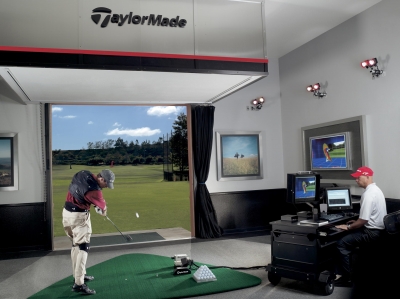 |
“It’s always helpful for people to see the way the pros do it. If you’ve ever wondered why Hank Kuehne can hit 350 yard drives, all you have to do is witness his 140 degree shoulder-turn while his hips are only moving at 25 to 30 degrees. His swing involves a tremendous amount of flexibility, and there aren’t many people who can expect to perform that way,” Miele said.
“But we’re also able to match you up with somebody who’s a little closer to your body-type and the way you swing, and it can be very educational. If someone goes really far back, we might put you against Fred Couples, or if your swing’s a little shorter, maybe it’s Darren Clarke or Tom Lehman. It’s good to show people that you don’t necessarily have to have such a dramatic coil (like Kuehne) to produce a lot of power, like a Tom Lehman,” Miele added.
Aside from the fun of matching yourself against guys you see regularly on TV, the MATT system’s greatest strength lies in its ability to set you up with the best clubs for your swing characteristics. With the type of specialization in club design today, it’s good to know that your golf equipment is matched to what you do – and not necessarily asking you to try and change to get the most out of it.
There’s also a MATT system for assessing your putting stroke, which will recommend the best types of putters for you.
My time spent at The Kingdom was three of the most interesting and different hours I’ve spent in golf. Miele’s guidance and good sense of humor made it extremely enjoyable and informative. At current, there are only a few MATT systems throughout the country, but Miele says they’re working to introduce several more in the coming year.
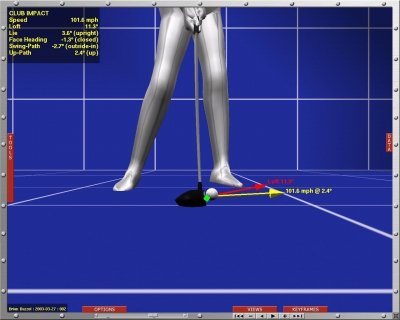 |
It’s just another tool in the never-ending quest to try and compete in the game of golf. Definitely try it out if you get the opportunity.
Note: Check the links below for more reviews of TaylorMade Products.
Details:
TaylorMade r7 Quad Drivers and Rescue Fairway Woods
Available at your higher-end golf retailers and club pro shops.
Check out more information about TaylorMade products at: http://www.taylormadegolf.com/.
TaylorMade became famous for pioneering metal woods, but the company now produces everything from metal woods to wedges to putters. And since joining with Adidas, don’t forget footwear and clothing. Check out the website for more information.
| Related Links | Comments on this article? | |
|
Maryland National Golf Club Hollow Creek Golf Club Rocky Gap Resort PB Dye Golf Club in Ijamsville Whiskey Creek Golf Club |
E-mail Jeff Rendall, Editor: jrendall@golftheunitedstates.com |













